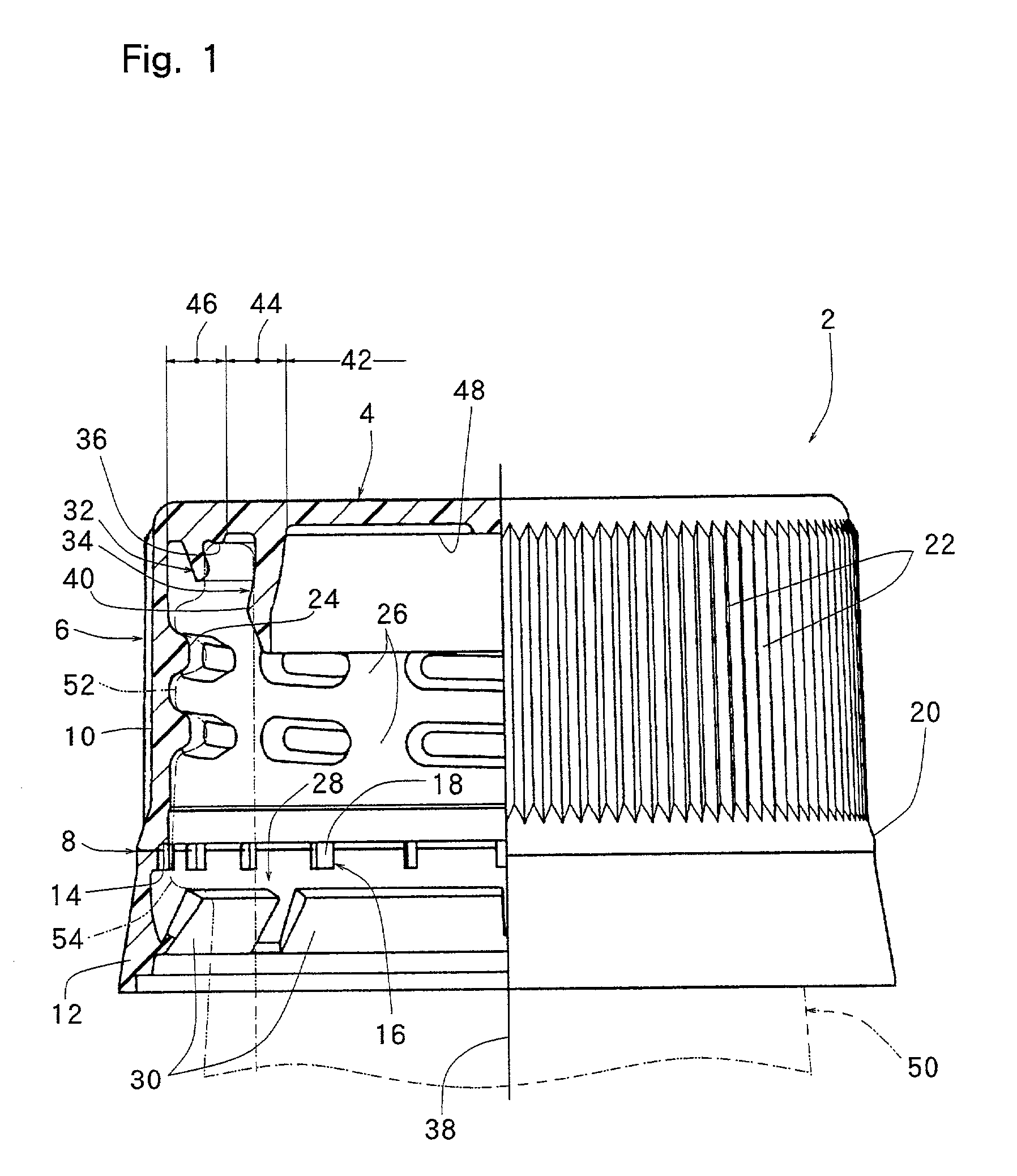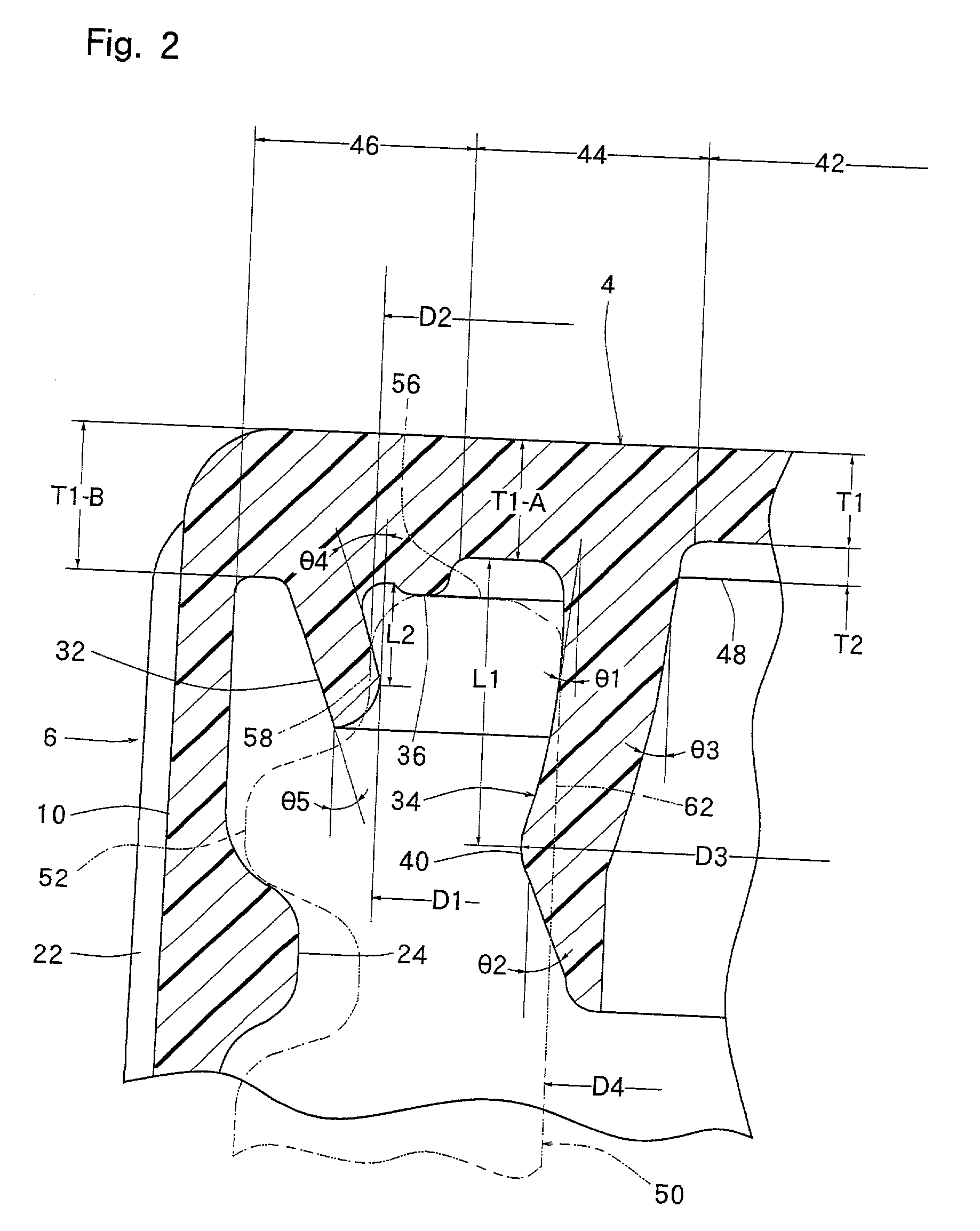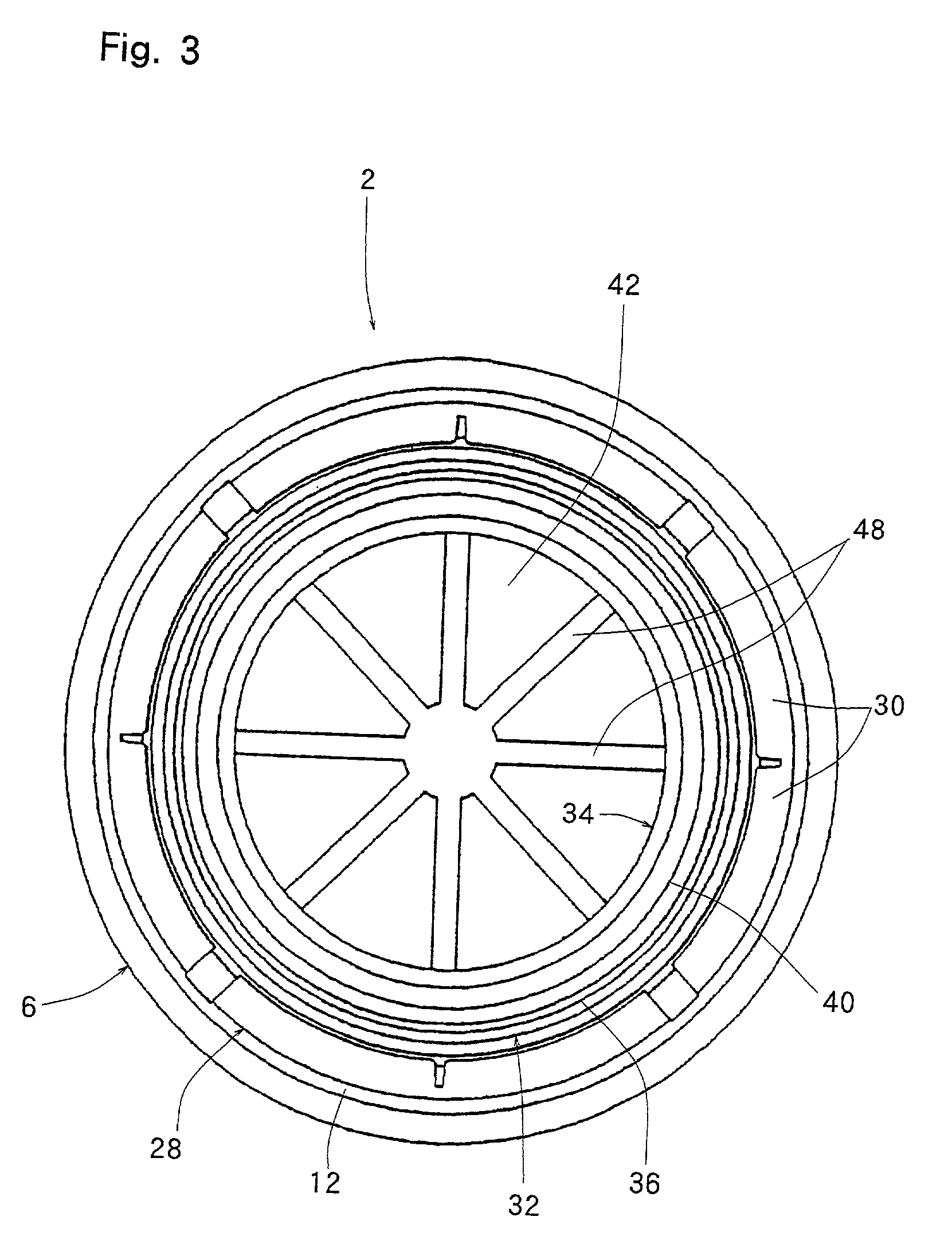However, the above container closure of the prior art involves the following problems to be solved.
Therefore, in the above container closure of the prior art, there is a tendency that the sealing of the mouth-neck portion is released before the container closure is turned at a predetermined rotation angle owing to the production tolerance of the container closure and / or the mouth-neck portion or owing to the
thermal deformation of the container closure and / or the mouth-neck portion, and there may occur a case where the above basic requirement can not be satisfied.
Secondly, the above container closure is formed from an appropriate synthetic resin by
compression molding or injection molding.
However, when the thickness of the top panel wall, particularly the center portion thereof, is reduced, another problem arises as follows.
When the space between the top surface of the mandrel and the peripheral surface of the printing roller is made large to prevent this situation, the amount of compression of the printing roller at the time when the printing roller is applied to the outer surface of the top panel wall of the container closure mounted on the mandrel becomes too small, thereby making it impossible to carry out satisfactory printing in a case where the outer surface of the top panel wall has some general permissible
distortion.
Further, if the thickness of the top panel wall, particularly the center portion, is reduced, the rigidity of the top panel wall is inevitably reduced, whereby the so-called flexibility of the inner cylindrical sealing protrusion becomes too large,
contact pressure between the inner cylindrical sealing protrusion and the inner peripheral surface of the mouth-neck portion of the container becomes too small and hence, the hermetical sealing of the mouth-neck portion is liable to be insufficient.
As is well known to people having ordinary skill in the art, after the synthetic resin container to be filled with contents heated at approximately 80 to 95.degree. C. is molded into a predetermined shape, the mouth-neck portion thereof is crystallized by heating, thereby slightly reducing the dimensional accuracy of the mouth-neck portion.
If (D2-D1) and (D3-D4) are too small, such tendency occurs that the hermetical sealing of the mouth-neck portion may become unsatisfactory and at the same time, the sealing of the mouth-neck portion may be released before the container closure is turned at a required rotation angle to open the mouth-neck portion.
On the other hand, if (D2-D1) and (D3-D4) are too large, there is a tendency that torque to be applied to the container closure to open the mouth-neck portion may become excessive.
If the thickness T1 of the center portion of the top panel wall is too large, the thickness T2 of each of the ribs is too large, or the total of the thickness T1 of the center portion of the top panel wall and the thickness T2 of each of the ribs is too large, the
cooling time required for preventing deformation larger than the permissible range in the top panel wall will become long.
If the thickness T1 of the center portion of the top panel wall is too small, the rigidity of the top panel wall will become too low and the hermetical sealing of the mouth-neck portion of the container will become insufficient.
If the thickness T2 of each of the ribs is too small or the total of the thickness T1 of the center portion of the top panel wall and the thickness T2 of each of the ribs is too small, the rigidity of the top panel wall will become too low and at the same time, it becomes necessary to set the space between the top surface of a mandrel and the peripheral surface of a printing roller to an extremely small value in the printing step, and there is a possibility that the inner surface of the center portion of the top panel wall is stained by a
printing ink as described above.
If (D3-D4) is too small, such a tendency occurs that the hermetical sealing of the mouth-neck portion may become unsatisfactory and at the same time, the hermetical sealing of the mouth-neck portion may be released before the container closure is turned at a required rotation angle to open the mouth-neck portion.
On the other hand, if (D3-D4) is too large, there is a tendency that torque to be applied to the container closure to open the mouth-neck portion may become excessive.
If the thickness T1 of the center portion 42 is too small, the rigidity of the top panel wall 44 may become too low and the hermetical sealing of the mouth-neck portion of the container may become insufficient.
Further, the following problem arises in the printing step.
 Login to View More
Login to View More  Login to View More
Login to View More 


